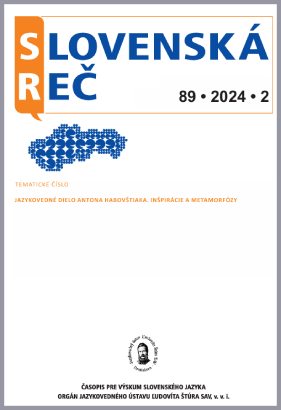Syntaktické osobitosti oravských nárečí
Syntactic Peculiarities of Orava Dialects
Author(s): Adriana FerenčíkováSubject(s): Language studies, Language and Literature Studies, Theoretical Linguistics, Syntax, Western Slavic Languages
Published by: SAV - Slovenská akadémia vied - Jazykovedný ústav Ľudovíta Štúra Slovenskej akadémie vied
Keywords: Slovak; Orava dialects; dialectal syntax; pecularities; comparative aspect
Summary/Abstract: The paper is based on the brief data on the syntax of the Orava dialects in Habovštiak’s monograph Oravské nárečia [Orava Dialects] (1965) and tries to detect some peculiar syntactic forms, the functioning of synonymic constructions with regard to their territorial distribution, frequency, stylistic characteristics and place on the temporal axis. The material base of the paper consists of samples of dialect texts published in Habovštiak’s monograph and his extensive anthology of dialect narratives Oravci o svojej minulosti [The Orava Inhabitants about Their Past] (1983). The results of the research indicate that, in comparison with neighbouring dialects, Orava dialects use syntactic constructions with the primary prepositions do, na, za to a larger extent, and that they also express the simile by means of the conjunctions sťa and že. The productive item of their syntactic system is the genitive of negation, as well as several kinds of infinitive constructions. A characteristic feature of all Orava dialects is the use of the negative form of the 2nd pers. sg. of the verb mať [to have] in the function of denying existence – as a synonym of the form ňejest it is the main element for expressing this meaning in the dialects of Upper Orava.
Journal: Slovenská reč
- Issue Year: 89/2024
- Issue No: 2
- Page Range: 137-148
- Page Count: 12
- Language: Slovak

